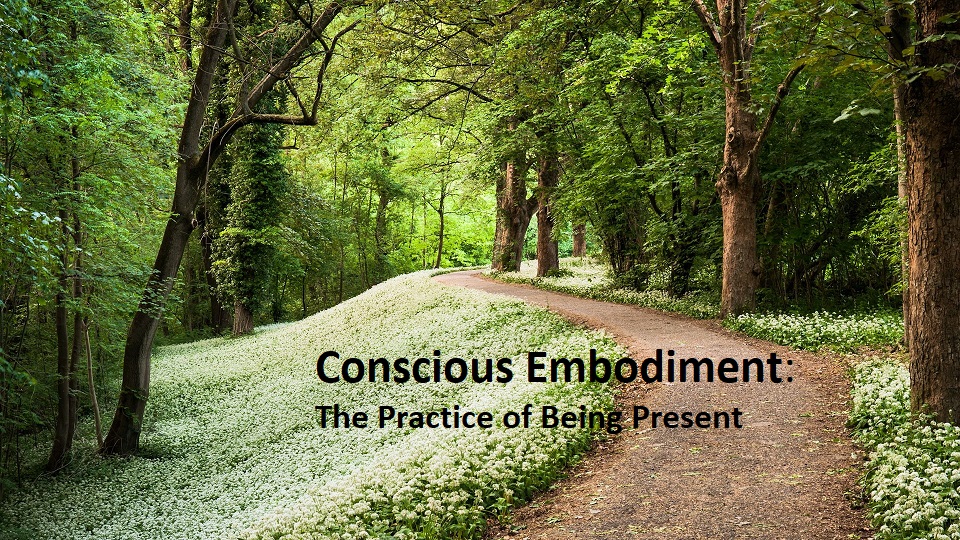
Anxiety and Avoidance

These days when you read up on anxiety, or when you get help for anxiety, you're most likely to read or to be told about the Cognitive Psychology approach to anxiety. The Cognitive approach is to think of anxiety as a result of patterns of thinking that are neither useful, nor based on factual or objective reality. The focus of this approach is therefore to consciously reformulate those thoughts so that they are based in "objective reality" and factual evidence. This approach to understanding and dealing with anxiety is very useful, and has a lot of benefits, but in my experience it is rarely sufficient to really change a long-term pattern of feeling anxious.
For people with a very strong degree of anxiety, with very long-term and pervasive patterns of anxiety, or for anxiety that is very generalized over many areas of their lives, the cognitive approach provides a useful tool that is more or less effective at different times and in different situations, but that doesn't change the fundamental problem, the fundamental pattern of reaction, or of how they feel in the world.
In my experience, changing long-term, pervasive and persistent patterns of anxiety requires a more comprehensive and integrative approach. What do I mean by that? I mean by that, an approach that involves a wide variety of techniques, skills and practices that are each helpful in a different way. "More comprehensive and integrative" means "broader and deeper." An integrative and comprehensive approach pulls and integrates aspects from cognitive approaches as well as from mindfulness, yoga, energy therapies and behavioural therapies.
It also means a wider range of ways in which you both think about and deal with changing anxiety; an approach that not only integrates techniques and skills from a range of approaches, but an approach that takes into account and integrates all aspects of you as a person.
But even more than that, what I mean can be illustrated by the metaphor of the difference between re-plastering a crack in the wall that periodically opens up when the wall shifts, versus going to the root of the problem in the unstable structure of the wall, or even the foundation of the house, and correcting that root problem so that the wall no longer shifts and cracks.
A comprehensive and integrative approach to dealing with anxiety means that you are really undertaking to change the experience you have of being in the world, rather than just reaching for some tools when your habitual patterns are causing you too much distress.
It is about widening the scope of how you think about your anxiety and how you deal with it. It is about exploring and experimenting with a wide variety of skills, methods, and strategies that create a much more substantial, solid and effective trampoline to bounce back on, than by taking only one approach. Furthermore, it's about having a much more holistic view of yourself, and approaching your anxiety in that more holistic way so it becomes more about long-term change and healing than about managing momentary anxious reactions. This fundamentally requires a mind-body approach.
If you suffer from anxiety, you are well aware that it is not just about thoughts and thinking. It is also very much a problem in the body. We feel anxiety; we feel anxious and it is the feeling of anxiety that is the problem. That is what we are suffering from. If changing your thoughts successfully changes those feelings and they dissipate or go away, problem solved. (Unless, of course, these thoughts are part of a recurring pattern you know will return, and so you have only solved the problem in the moment, unless you change that pattern.)
But for many people, changing thoughts is not sufficient for creating long-term change in the patterns of thinking, feeling and reacting that are associated with anxiety.
Anxiety being a problem that is experienced in the body, it is in the body that we also need to deal with it. Breathing/relaxation techniques are essential to this. Now, what sometimes happens is that people hear this, and interpret it based on what they already know. So you might believe that it just means you should work with slow, deep breathing when feeling anxious. While working with slow, deep breathing may help you when you're feeling anxious, it is not what is meant when you read, or hear, that breathing and relaxation techniques can help with anxiety.
When we talk about breathing and relaxation techniques we are really talking about specific breathing techniques that have specific effects, and we're talking about practising these techniques daily so that you are forming new habits, retraining your brain and ultimately reprogramming how you react to things. Mindfulness is well-known now to be a useful practice for changing these patterns and overcoming anxiety. Techniques such as centering and grounding are also critical to learning how to get out of your thoughts and to feel at home in your body.
An integrative and comprehensive approach to deal with anxiety includes dealing with your thoughts, but does a lot more than that. Through working with breathing, centering and grounding techniques, you directly change what you are experiencing in your body.
But it is not just about calming anxiety when you're feeling anxious, it is about learning how to cultivate the opposite feeling of anxiety over the long term. The feeling of being centred and grounded. The feeling of being in the present moment. The feeling of being fundamentally okay within yourself, and not so vulnerable to sudden "triggers" in your environment. That's a whole different thing: cultivating a new way of feeling within yourself. That's where the real power lies. Meditations such as heart meditations are also really helpful for developing and expanding that feeling of wellness within, and that antidote to anxiety.
It is a lot easier to deal with your negative patterns of thinking and to disengage from them, when you have calmed anxious feelings in your body. When you're feeling more secure and safe and centred within yourself, you can then be a lot more objective in assessing your thoughts and your reactions.
But in this new paradigm, there is a further step you can go to. The energy paradigm is based in the understanding that ultimately, not only is all matter energy, but all our thoughts, our feelings and our reactions are also energy. This is not a fanciful notion or some kind of spiritualist metaphor; at this point in time, it is recognized scientifically as simple reality. Even if you believed in the old (now invalidated) scientific hypothesis that anxiety is caused by an imbalance in brain chemistry, then scientific-mindedness would oblige you to recognize that both the brain itself and its chemical components are all ultimately formed of energy.
When we think of our thoughts and feelings and reactions as being energy processes, it gives us other ways to intervene with them. There are a lot of methods that are specifically designed to deal with these processes in the mind and body on an energetic level, and many are very promising in the effectiveness they show. When you deal with anxiety and anxious reactions as an energy reaction, the idea is that you are actually working on the energy system of all your anxiety - all your similar anxiety reactions through your life as well as the origins, the causes of why you developed these reactions - and so it becomes an effective way to resolve the problem at its foundation, its core.
